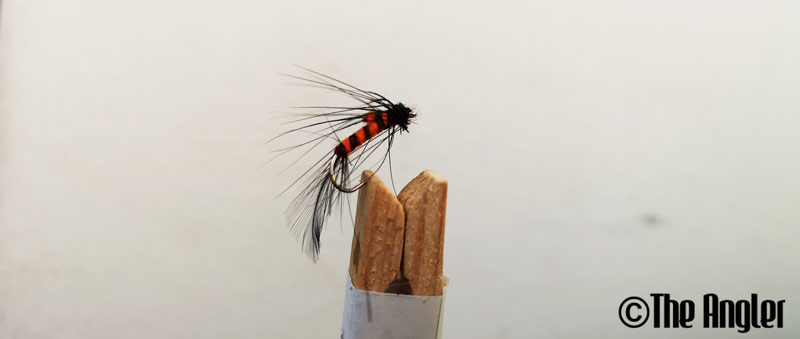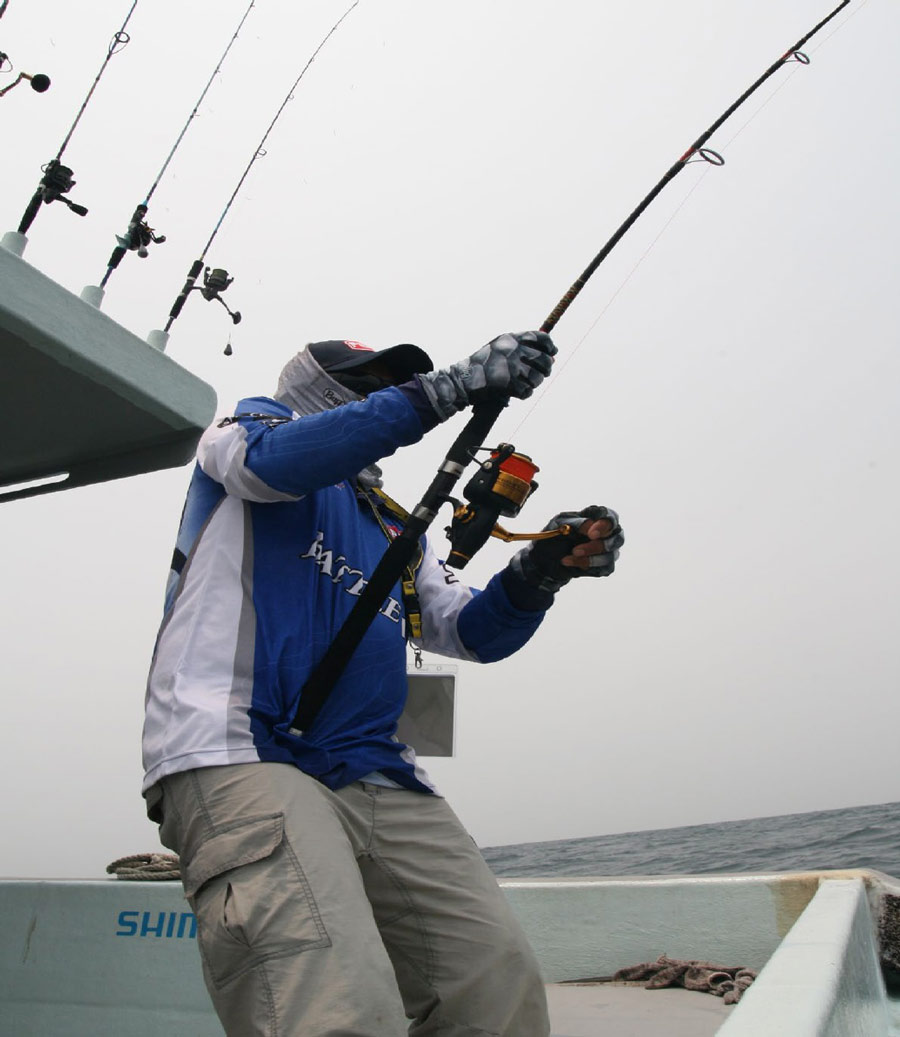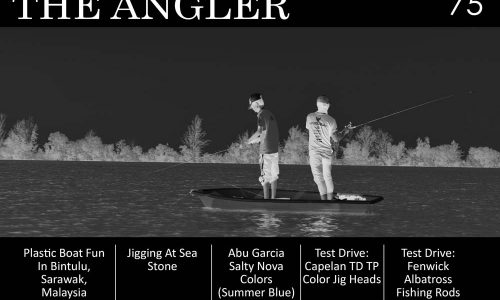A Journey Into The World Of Fly Fishing
What Is Fly Fishing
We all know that there are a few different styles of fishing and the one that stands out the farthest, I believe you will agree with me, is Fly Fishing. Most anglers who fly fish almost unanimously agree that fly fishing is an art as compared to other techniques of fishing such as bottom fishing, pole fishing, lure casting, hand line fishing, etc. So, how different is fly fishing as compared to these other fishing techniques?
Fly Fishing And Conventional/Popular Styles Of Fishing
Before we move on with this topic, let us just lump all the other types of fishing into one category. Let’s call them conventional styles of fishing. I am not sure if this is the right or proper term to use but for the sake of understanding fly fishing in this article, let us just stick to that. So, what is the difference between fly fishing and conventional styles of fishing?

The delightful Fenwick Night Hawk fly fishing rod.
Baits
One difference between the two are the baits. Conventional styles of fishing uses baits such as live worms, dough, fruits, bugs, grubs, live fish, live prawns, frogs, leeches, etc. There are also artificial lures such as plastic and wooden lures, spoons, spinners, jigs, soft plastic baits, etc. All these baits are well known and have for years been helping anglers catch fish.
Fly fishing on the other hand uses natural or synthetic materials such as fur, feathers, and some other synthetics which are tied onto a specific fly fishing hook to resemble insects, shrimps, small fish which are impressions of the food which fish eat. The closest style of fishing to fly fishing in terms of baits will have to be a Tenkara pole, where a ‘fly’ is tied to the end line but does not use a reel or a fly line. In recent times, a fly is also attached to the end of a leader rigged with a small weight using a conventional rod and reel. This technique is known as “Spin-Fly”. As these 2 techniques do use a “Fly”, it is not considered as fly fishing.

A fly.
Casting Of Baits
Another big difference between conventional styles of fishing and fly fishing is the cast. When it comes to conventional styles of fishing, casting out baits and lures are pretty straight forward. The rod tip uses the weight of the lure or bait (and sinker) to execute a successful cast by having the lure or bait (or sinker) carry the line out of the reel towards the fishing zone. The rod tip moves in an arc to swing out the lure or bait to the intended fishing zone. When it comes to pole or Tenkara fishing, the line is either dropped in the water or flicked to a section where the angler intends to present the bait.
When it comes to casting a fly, the angler uses the weight of the line to cast the fly to an intended target. Instead of moving in an arc, the tip of a fly rod moves in a horizontal line during the cast. Sometimes it takes a few casting strokes or “False Casting” in Fly Fishing terminology, to get the fly to a specific target. There certainly is a lot more physics at work here.

Fly reels.
Presentation
Presentation of baits or lures between fly fishing and conventional styles of fishing are very different. When it comes to presentation of baits (including presentation of lures), noise or disturbances is something that anglers fishing the conventional way cannot avoid. There will always be a splash or a “sploosh”, and sometimes even a “plomp” as the bait or lure breaks the surface of the water. These disturbances do scare fishes away most of the time. Of course some fishes will take a lure or baits out of aggression or reaction, but most of the time they dive for cover, especially in heavily fished areas.
Fly fishing on the other hand is great when it comes to a silent presentation; superb for sight fishing. Since most flies used are very small and lightweight, they do not make a splash when landing on the surface of the water. Having your fly drop onto the water surface as silent as a falling insect is always an advantage where it does not scare the fish or fishes around an intended zone which holds fish. This is a big plus point for fly fishing especially in waters that are highly pressured by many anglers and where fishes are “scaredy cats” and are easily spooked. A quieter presentation will encourage more bites when fishing in such places.

Fly fishing rod and reel.
A Difference Of Tackle
To the benefit of those new to fishing, when we say fishing tackle we do not mean tackling a fish or tackling the sport of fishing. Fishing tackle simply means fishing equipment that are used for fishing. Fishing tackle between fly fishing and conventional styles of fishing are also different.
Granted that most styles of fishing use a fishing rod (let’s not include pole here and only discuss rods with line guides and reel seats), there is a difference between these rods. Fly fishing rods have reel seats very almost at the end of the butt section whereas spinning rods and casting rods have them further up front providing for more leverage when fighting or battling a fish.
Fly reels are also different. They resemble bait casting reels more but flattened into narrower proportions. The closest reel that resembles fly fishing reel is the ikada fishing reel. I am sure that most of you have not heard of ikada fishing. It is a type of fishing that is done mainly in Japan. It is fished conventional style with weighted baits, fishing rods, and small fishing reels that look like fly reels. Unlike conventional reels, fly fishing reels use a center pin spool and line retrieval is usually on a 1 to 1 ratio. Some are quipped with a clicker and some with a drag system.
Fishing lines used are also different. Conventional anglers use mainlines that are either the modern braided lines, monofilament, or fluorocarbon. These use leaders that are either monofilament or fluorocarbon. As for fly fishing the lines used are a backing line, fly line, a leader, and a tippet. The use of a backing line to support longer fish runs (unlike the reason for backing lines used with bait-casting reels).
The fly line is basically the “weight or sinker” that is used to cast a weightless ‘fly’ out towards the intended fishing zone. They are also usually brightly coloured so that the angler that see where his line (and flies) are going. This is important as the flies used can be really tiny and be easily camouflaged against a background of vegetation. Try spotting a fly some 30 feet away against the sky and you will understand what I am trying to say.
The leader is basically the link between the fly line and tippet. Having a good distance between the fly line and fly is important, which the length of a leader is normally the length of a fly rod as a general rule. The fly line being a heavier line can be seen by fish and thus having a long and almost invisible leader line between it and the fly is certainly very important.
The tippet is the thinnest line that links the leader line to the fly. Tippets are thin, clear lines, and almost invisible to fish. The reason for using a tippet is so that the fish sees the fly but not the lines and thus gives the angler a higher chance of registering a bite.
A Whole New Learning Curve
With fly fishing being such a unique and different style of fishing, learning or taking up fly fishing is certainly something that anglers must do to spice up their fishing. After all, taking new challenges and learning something new is always an exciting and interesting journey. It adds to your skills and capabilities as well; another feather to one’s fishing cap. With this we encourage you to take up fly fishing if you have not done so and follow us on a new fishing journey; A Journey Into The World Of Fly Fishing.
In the next issue we will look at how to choose your fly fishing equipment. Stay tuned for the next episode.

Contact us
For more information or should your have enquiries, do drop us an email.





